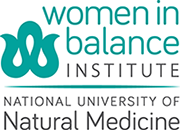 What is it?
What is it?
Sleep is prompted by natural cycles of activity in the brain and consists of two basic states: rapid eye movement (REM) sleep and non-rapid eye movement (NREM) sleep, which includes Stages 1 through 4.
During sleep, the body cycles between non-REM and REM sleep. Typically, people begin the sleep cycle with a period of non-REM sleep followed by a very short period of REM sleep. Dreams generally occur in the REM stage of sleep.
Sleep problems can affect women at different times, but are especially common in perimenopausal women and increase after age 40. Not being able to sleep or insomnia can be associated with a variety of factors including stress, mental health problems, disease, increased use of medications and hormone imbalances. A good night’s sleep can help you maintain energy, rebalance hormones and ward off infections and illness.
What to do?
Keep good sleep hygiene – or sleep habits – at night. These include:
- Set a bedtime and wake up time
- Avoid caffeine and alcohol before bed
- Avoid naps longer than 30 min during the day
- Establish a pre-sleep ritual
- Avoid stimulation or bright lights right before bed
- Exercise regularly
- Reserve the bed for only sleep and sex
- Establish a pre-sleep ritual
Work with a qualified health professional to find out what supplements or individualized bioidentical hormones you may need.

